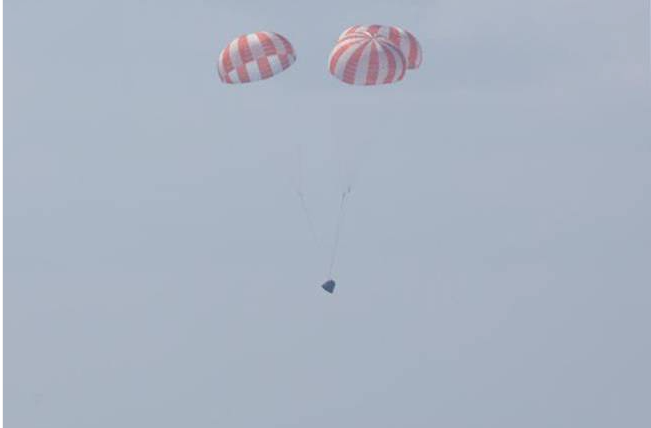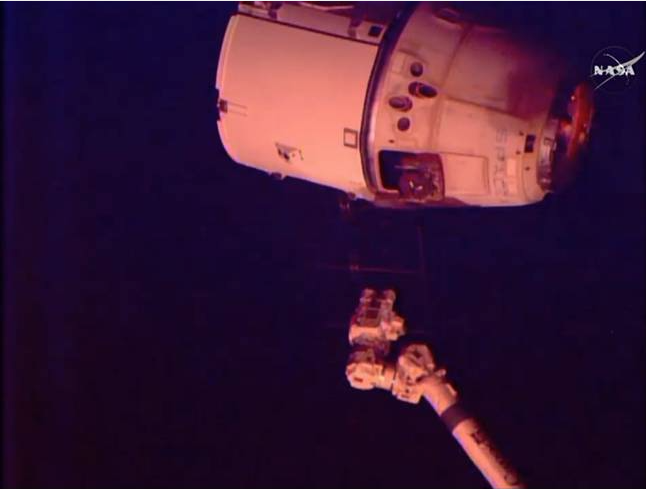
SpaceX's Dragon cargo capsule has made a splash-landing in the Pacific Ocean as planned after detaching from the International Space Station.
[SatNews] SpaceX's Dragon cargo capsule has made a splash-landing in the Pacific Ocean as planned after detaching from the International Space Station.
The month-long mission ended with a successful, if damp, landing and the 3,100lb of completed scientific experiments, broken hardware, and dirty clothes has been successfully retrieved.
The Dragon casule was unhitched from the ISS at 0409 PT (1209 UTC) using the station's Canadian-built robot arm. Shortly afterward, SpaceX controllers down on Earth began orbital maneuvers using thrusters to get out of the 656-foot (200-meter) "keep out sphere" around the ISS. It was then orientated to ensure the heat shield was correctly positioned and the de-orbiting burns pushed it out of orbit.
The capsule's parachutes deployed as expected and the Dragon splashed down at in the Pacific Ocean at 0942 PT (1742 UTC). Then its inflatable balloons deployed so tht the capsule stayed afloat. It has been winched aboard the recovery ship and it's now making the last 155 mile trip back to Long Beach, California for unloading.

The Dragon capsule is released with 3,100lb of completed scientific experiments, broken hardware, and dirty clothes.
The science experiments included in Dragon's hold include a worm farm. Astronauts have been growing the millimeter-long roundworms to see how the lack of gravity helps or hinders their development, results which will have an impact on calculations of how humans will survive in orbit.
"Spaceflight-induced health changes, such as decreases in muscle and bone mass, are a major challenge facing our astronauts," said Julie Robinson, NASA's chief scientist for the International Space Station Program Office at NASA's Johnson Space Center in Houston.
"We investigate solutions on the station not only to keep astronauts healthy as the agency considers longer space exploration missions but also to help those on Earth who have limited activity as a result of aging or illness."
The cargo pod also includes the Special Purpose Inexpensive Satellite (SpinSat), a 22-inch spherical satellite that was using a new type of thruster for maneuvering in space. The satellite also took measurements of Earth's upper atmosphere during testing.
The splashdown marks the sixth successful resupply mission to the ISS, one of 15 the company has contracted for. With the failure of the last Russian resupply attempt SpaceX looks well positioned to take over lucrative contracts with NASA in the future. ®From

